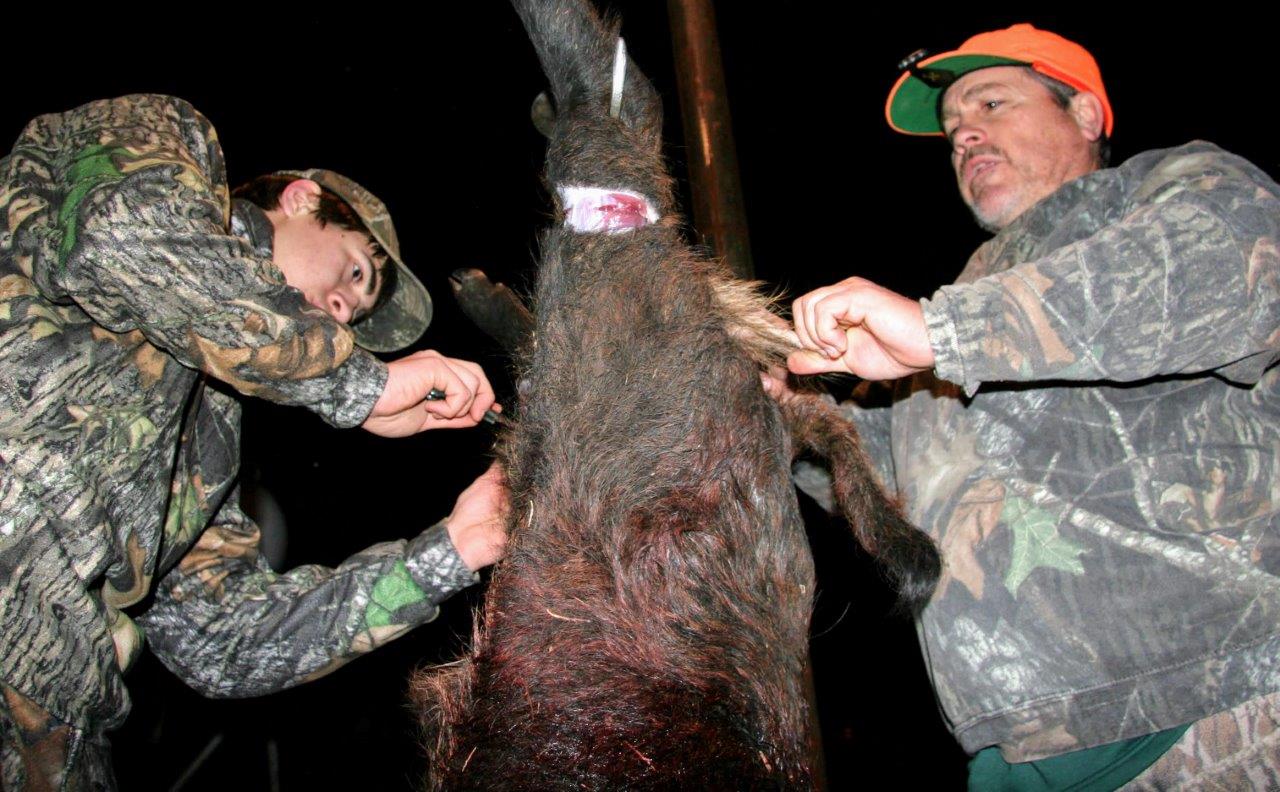Wild Pig Explosion Starts in Belly of the Beast

Slicing into a wild pig killed overnight during a research cull, a student of Dr. Steve Ditchkoff expects the unexpected. Another wild pig, another necropsy, and quite possibly—another surprise. Roots, vegetation, seeds, pecans or acorns, insects, rabbit, deer: What is inside the belly of this particular pig?
As the blade cuts through the stomach wall, 53 toads spill from the cavity—telltale evidence of a phenomenally adaptive creature geared for survival. “There’s not an animal in North America that compares with the opportunism of a wild pig,” Ditchkoff says. “If you take away invasive pythons in Florida, wild pigs are unquestionably the No. 1 vertebrate pest in the country, and they’re responsible for untold amounts of destruction.”
Truly. And 53 toads is merely a tiny dish on a buffet line with no end. Wild pigs have exploded in numbers across the United States, possibly exceeding 6.5 million in just under 40 states, assisted in great part by car wheels on gravel—human transport, and their proliferation involves far more than an outrageously high birth rate and extreme intelligence. Without exaggeration, wild pig control is one of the greatest challenges in U.S. wildlife management history, and in many ways, wild pig prosperity is partially due to a hog’s ability to eat like a human, i.e., the truth is in the fascinating belly of a beast like no other.
Opportunistic Masterclass
How can a creature that eats almost anything be controlled? The latitude in a wild pig’s ability to source food is astounding, from foraging roots in the woods, to feasting in a pecan orchard, to hitting a freshly planted row of corn and precision-rooting seed every 6” for 100 yards, to consuming the remains of dead mammals, or to functioning as a predator, says Ditchkoff, a wildlife biologist at Auburn University, and one of the top wild pig specialists in the U.S., as he recalls a chilling lesson witnessed firsthand during a nighttime harvest of wild pigs in Alabama in 2006. Under cover of darkness en route to cull a wild pig, Ditchkoff heard the bleats of a fawn, and upon locating the source of distress, shot a wild pig in the process of consuming the dying deer. During the subsequent necropsy, Ditchkoff’s team found several feet of the deer’s intestines inside the wild pig. (Anecdotally, multiple accounts exist from farmers and landowners observing cannibalistic behavior of wild pigs feeding off the carcasses of their own species.)
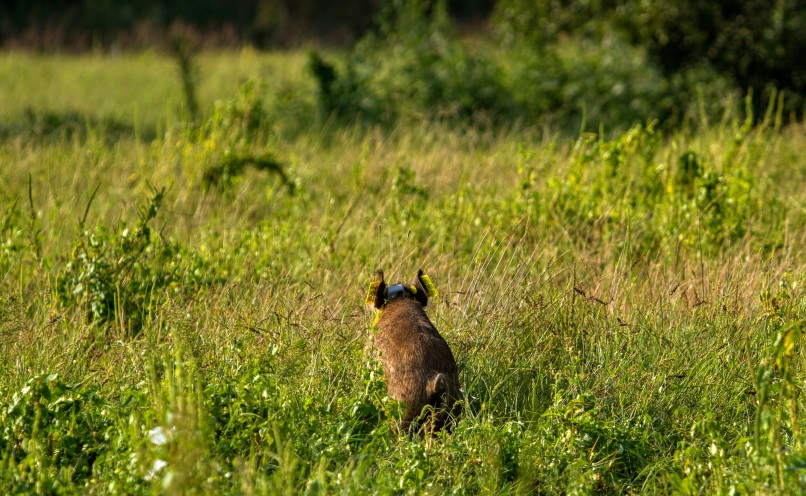
Suffice to note, the capability of wild pigs to ingest a wide spectrum of food relates directly to their ability to cause havoc on U.S. farmland. Annually, APHIS estimates wild pig damage to the U.S. agriculture economy at $1.5 billion, but Ditchkoff, author and co-editor of Invasive Wild Pigs in North America: Ecology, Impacts, and Management, believes the true dollar amount may be significantly higher. “We don’t have solid numbers on the losses inflicted on ag by wild pigs, and the numbers we do have are low on detail. There have been several studies in recent years, but they haven’t come to a reliable, comprehensive conclusion. I think $1.5 billion is low because it doesn’t factor in water quality effects and ecological damage that can’t be enumerated.”
In 2016, APHIS estimated the total U.S. wild pig population at 6 million across almost 40 states—a glaringly high number considering wild pigs may have numbered as low as 500,000 prior to 1990.
Jack Mayer, manager of the Environmental Sciences and Biotechnology Group at the Savannah River National Laboratory in Aiken, S.C., pegs the wild pig population at 6.3 million, with an overall possible range of 4 million to 11 million. Wild pigs breed year-round and sows produce two litters per year—six piglets on average, but litters can be as large as 12 piglets.
Although rare, sows are biologically capable of conception as early as four months and boars are sexually mature at five months, according to Mayer. There are two general ruts, but wild pigs mate year-round, and sows give birth every month of the year.
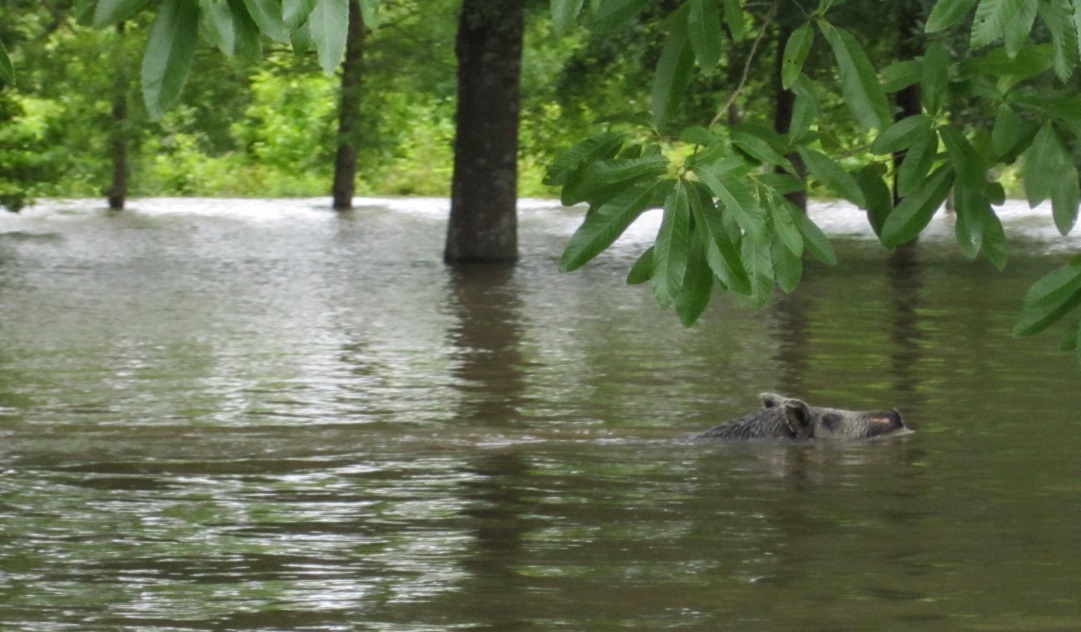
The average wild pig age is 1.5 years, with the oldest animals living 8 to 10 years. Sows and litters run together, often in multiple groups, but mature boars tend to be solitary except during breeding. Boars average 200 lb. (but can reach up to 500-600 lb.) and sows average 170 lb. in size, and can run at speeds nearing 30 mph, and cross rivers or bodies of water with relative ease.
Breeding rate, physical prowess, and intelligence are enough to make wild pigs a grand survivor, but when dietary superpowers are tossed in the mix, wild pigs are elevated to an opportunistic masterclass. One serving or another, nature’s trough provides a feast for wild pigs—but, surprise, gluttony plays a minimal role.
Wild Pig Shangri-La
“Despite public perception, wild pigs are no more gluttonous than any other animal,” Ditchkoff notes. “Their metabolism and digestive system is extremely similar to humans. If you really want to know the dietary possibilities of a wild pig, just consider whatever a human can eat and then some.”
The perception of a wild pig as more ravenous than other mammals partially is due to the manner in which they acquire food—much of which is below the surface, Ditchkoff notes. Extraordinary diggers and rooters of the animal kingdom, wild pigs sport an hourglass nasal bone floating in cartilage that provides backing for the nasal pad on the snout, enabling pigs to lean in when rooting with amazingly strong neck muscles, often leaving acres of pasture and row crop ground with a strafe-bombed appearance. Yet, the same snout capable of operating as a porcine bulldozer is also highly sensitive to smell, picking up scents from five to seven miles away, or 20’-plus below the surface.
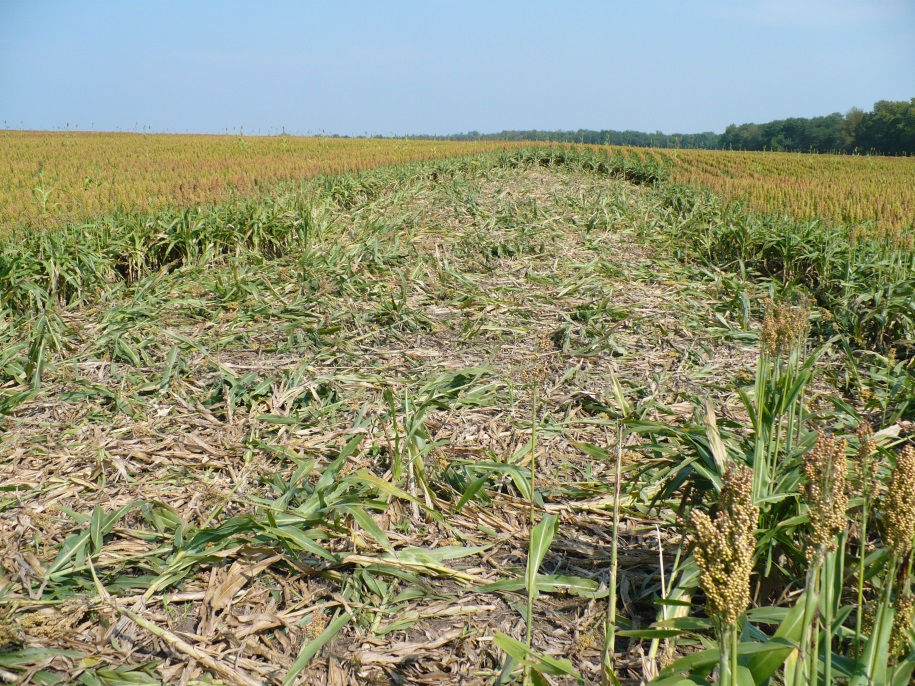
Wild pigs begin consumption of normal food at roughly two weeks of age, but are not weaned for several months. (The timeline is similar to whitetail fawns, which begin eating vegetation at three to four weeks, but still suckle.) Wild pig diet is 80-90% plant matter, depending on the time of year. “No. 1, they go after roots, and No. 2, plants that store lots of carbohydrates,” Ditchkoff explains. “For example, they absolutely love longleaf pine root systems, and will hammer a line of seedlings to get the starch and carbohydrates.”
Given opportunity, or pressed by necessity, wild pigs switch to earthworms, insects, larvae, turtle eggs, ground-nesting birds, reptiles, amphibians, and mammalian carcasses. An average boar (200 lb.) requires at least 3,000 calories a day (paralleling a human of equal size), but spends additional energy searching and foraging for food sources, requiring a caloric increase. (Caloric requirements for pregnant sows don’t increase significantly, Ditchkoff notes, but protein requirements shoot up during the last trimester of pregnancy and during lactation.)
“This is the top find-it-and-take-advantage animal,” Ditchkoff describes. “Just look at Texas, where wild pigs are the second greatest predator of livestock in some parts of the state, eating newborns, and a lot of the time ranchers don’t even find out because there is nothing left.”
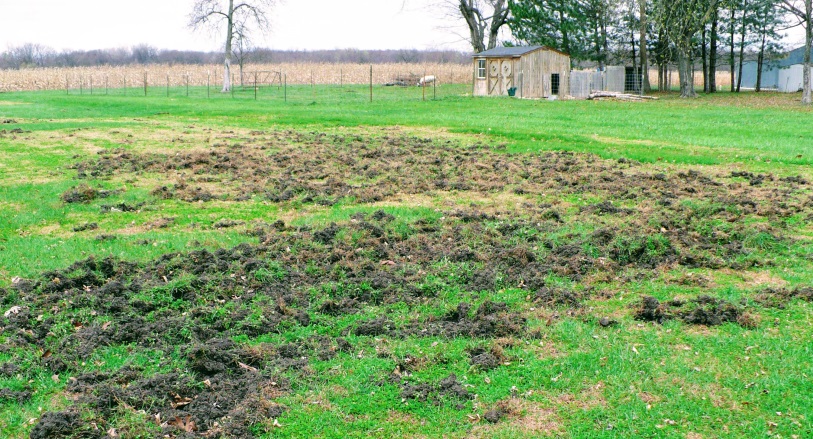
The common assumption that winter months are hardest on wild pig food sourcing may be in error, Ditchkoff says: “Their diet just hasn’t been examined in detail as with other species. The focus has been on how to get rid of wild pigs, but not much research has examined how they function. I’m not convinced the winter is that much harder on them, because in winter, plants store energy in root systems and the pigs have an opportunity to feast, but in summer, plants generally send energy into the leaves, and wild pigs are not leaf eaters. They don’t feed like deer. Winter may or may not be harder, but I’m not going to assume.”
All things considered, farmland is a wild pig Shangri-La: a grocery store surrounded by trees. Crop fields, pasture, timber, ponds, bottoms and irrigation sources provide food, water and cover. From a wild pig’s survivalist perspective: Why leave?
“Like No Animal In The Wild”
For over 40 years, and certainly the last two decades, wildlife biologists have tried to document the destructive behavior of wild pigs in order to control the species, with few research exceptions. Over the last several years, researchers have begun looking deeper at wild pig biology: “If we can understand their biology, then we can better control them, and understanding diet is a significant part of that.”
“There are still so many things about wild pigs we don’t know,” Ditchkoff continues. “We know very little about juvenile survival, because we don’t radio collar piglets like we do fawns. We don’t know how males move, because we typically put radio collars on females. We don’t know the extent of their effect on water quality, but we do know it is scary. Diet is one of those things we need to know more about to really understand the overall impact of wild pig populations.”
In 2020, Ditchkoff co-authored and co-edited the aforementioned Invasive Wild Pigs in North America: Ecology, Impacts, and Management, a winner of a Wildlife Publication Award, and a reference guide on wild pig behavior, ecology, management and overall outlook. (Ditchkoff’s co-contributors were Kurt VerCauteren, National Wildlife Research Center; James Beasley, University of Georgia; Jack Mayer, Savannah River National Laboratory, Gary Roloff, Michigan State University; and Bronson Strickland, Mississippi State University.
“There was a group of us working on this book,” Ditchkoff says, “and we wanted to provide a reference for students, scientists, wildlife managers or anyone involved with wild pigs.”
The final chapter of Invasive Wild Pigs in North America takes a look at the future—and Ditchkoff predicts positive changes on the horizon. “Twenty years ago, there was such little optimism in stopping wild pigs, but we’ve acquired so much knowledge, and I think we’re going to see a major difference downward in wild pig numbers. Toxicants are showing real promise, combined with all the other control techniques we’ve gained from. I’m not saying I envision anything approaching eradication, but I expect a major reduction in wild pig numbers.”
In conclusion, Ditchkoff acknowledges the tall order of reducing the population numbers of an animal with a prolific birth rate, high intelligence, imposing size, and phenomenally wide-ranging diet. “Almost all animals are limited food-wise—wild pigs are not. They eat from every plate on the table. They eat above ground; they eat below ground. They are big enough, mean enough and intelligent enough to utilize food sources like no animal in the wild,” he adds. “Oh yeah, ultimate survivor for sure.”
For more, see:
Fleecing the Farm: How a Fake Crop Fueled a Bizarre $25 Million Ag Scam
US Farming Loses the King of Combines
Ghost in the House: A Forgotten American Farming Tragedy
Rat Hunting with the Dogs of War, Farming's Greatest Show on Legs
Misfit Tractors a Money Saver for Arkansas Farmer
Predator Tractor Unleashed on Farmland by Ag's True Maverick
Government Cameras Hidden on Private Property? Welcome to Open Fields
Farmland Detective Finds Youngest Civil War Soldier’s Grave?
Descent Into Hell: Farmer Escapes Corn Tomb Death
Evil Grain: The Wild Tale of History’s Biggest Crop Insurance Scam
Grizzly Hell: USDA Worker Survives Epic Bear Attack
A Skeptical Farmer's Monster Message on Profitability
Farmer Refuses to Roll, Rips Lid Off IRS Behavior
Killing Hogzilla: Hunting a Monster Wild Pig
Shattered Taboo: Death of a Farm and Resurrection of a Farmer
Frozen Dinosaur: Farmer Finds Huge Alligator Snapping Turtle Under Ice
Breaking Bad: Chasing the Wildest Con Artist in Farming History
In the Blood: Hunting Deer Antlers with a Legendary Shed Whisperer
Corn Maverick: Cracking the Mystery of 60-Inch Rows


